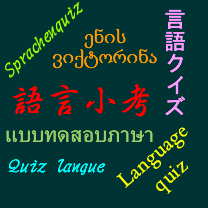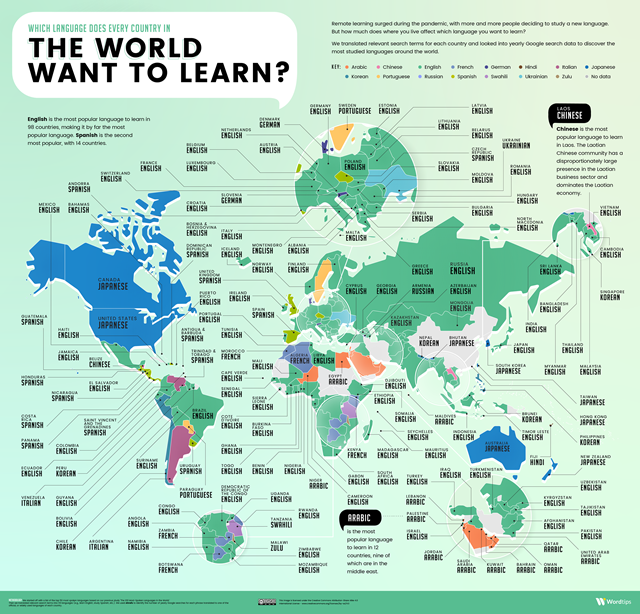
Here’s a recording in a mystery language.
Do you know or can you guess the language, and do you know where it’s spoken?

Here’s a recording in a mystery language.
Do you know or can you guess the language, and do you know where it’s spoken?
The other day I came across the Dutch word stuurknuppel [ˈstyːrˌknʏ.pəl] and had to find out where it comes from. I also rather like the sound of it.
Stuurknuppel means joystick, stick or controls, particularly in an aeroplane. It comes from sturen [ˈstyːrə(n)] (to steer, guide, send), and knuppel [ˈknʏpəl], which means a club, cudgel or other blunt instrument, and also a clown, lout or awkward individual [source].
Sturen comes from the Middle Dutch sturen (to steer, direct, lead), from the Old Dutch stiuren, from the Proto-Germanic *stiurijaną (to direct, steer). The English word steer comes from the same root, as do related words in other Germanic languages [source].
Some related words include:
If your thinking is woolly, it is unclear, fuzzy, hazy, confused, vague, cloudy and/or confused and irrational, and you base it more on emotions rather than logic. You might be said to be woolly-headed or woolly-minded. For those of you who use American English, just ignore the second l in woolly [source].
If you like to do a bit of woolgathering, then you either gather tufts of wool caught on bushes, are absentminded, or like to indulge in idle fancies and daydreams [source].
In Dutch the word wollig [ˈʋɔ.ləx] means woolly, fluffy, fuzzy, and also vague, unclear or muddy (tone) [source].
In Welsh, one word for woolly is gwlanog [ˈɡwlanɔɡ], which also means fleecy, unshorn, downy, woollen, and a well-off or well-to-do person. There are more sheep than people in Wales and owning a lot of them was probably a sign of prosperity in the past.
A related Welsh word gwlanen [ˈɡwlanɛn], which means a flannel or face-cloth, and also a man of weak character, one who lacks backbone, and a spineless or unreliable person, gwlanennog means flannel-like, soft and also weak-willed, without backbone, unreliable or spineless [source].
So a well-off person who is spineless would be a gwlanog gwlanennog.
You can find more woolly words in Celtic languages in today’s Celtiadur post.
Incidentally, the English word flannel comes ultimately from *wlanā, a Gaulish word meaning wool, via Old French and Norman [source].
Are there any interesting wool-related expressions in other languages?

Here’s a recording in a mystery language.
Do you know or can you guess the language, and do you know where it’s spoken?
One of the Dutch words I learnt recently is grappig [ˈɣrɑ.pəx], which means funny or amusing. It comes from grap [ɣrɑp] (a joke or prank), and is related to grijpen [ˈɣrɛi̯pə(n)] (to grap, seize, intervene), which comes from the Middle Dutch gripen (to grab, attack, overwhelm, understand), from the Old Dutch grīpan (to seize, grasp), from the Proto-West Germanic *grīpan (to grab, to grasp), from the Proto-Germanic *grīpaną (to grab, grasp), from the Proto-Indo-European *gʰreyb- (to grab, grasp) [source].
The English words grip and gripe come from the same Proto-Germanic root, as do words such as the German greifen (to grab, grasp, grip, seize, snatch, reach), the Danish gribe (to catch, seize, grab, grasp, grip), the Swedish gripa (to catch hold of, seize, detain), and the French griffer (to scratch) and gripper (to grab, grasp) [source].
Some related words and expressions include:
Do you know any good Dutch jokes?
Do you find jokes in languages you’re learning / have learnt funny? If you do, that is a sign that you really understand a language well.

Here’s a recording in a mystery language.
Do you know or can you guess the language, and do you know where it’s spoken?
An interesting Japanese expression I came across today is 客寄せパンダ (kyakuyose panda), which means a star attraction, draw card or crowd puller, or literally “visitor-gathering-panda” [source]. Originally it referred to pandas, which tend to be popular attractions in zoos and pull in many visitors, and came to refer to other crowd pulling attractions [source].
客寄せパンダ is made up of words of Chinese, Japanese and English origin and is an example of 混種語 (konshugo), or a hybrid word that combines elements from several languages.
The English word panda was borrowed from French, which possibly comes from nigálya-pónya, a name for the red panda used in Nepal and Sikkim, which may come from the Nepali निँगाले (nĩgāle – a species of bamboo), and the Tibetan name for the same animal: ཕོ་ཉ (pho nya, or literally “messenger”) – quite a hyrid word [source].

Here’s a recording in a mystery language.
Do you know or can you guess the language, and do you know where it’s spoken?
When is a chaise longue not a chaise longue?
Well, in English the word chaise longue [ˌʃeɪz ˈlɒŋ(ɡ)/ˌʃeɪz ˈlɔŋ] refers to a long kind of seat, like the one pictured above, designed for reclining on. The word chaise longue was borrowed from French and literally means “long chair” [source].
In French the word chaise longue [ʃɛz lɔ̃ɡ] refers to deckchair, sunlounger, lounge chair or chaise longue (in the English sense) [source].
Other kinds of chaise include:
The word chaise longue appears in quite a few other languages, such as Italian and Portuguese, with the same spelling and the same meaning as in English and French. Another word for this type of chair in Italian is agrippina, named after Agrippina the Elder, the daughter of Marcus Agrippa [source].
Some other ways it’s written include:
By the way, what is the plural of chaise longue?
Today we have a guest post by Taylor Tomita
Every year millions of people decide to learn a new language. Some do it as a hobby, while others brush up on their language skills before setting off on a travel adventure. And for many, learning a second tongue is the first step toward a brighter economic future.
So what are the most popular languages to learn? WordTips decided to find out. Its researchers created a map of the languages people are learning in every country across the globe. Here’s a closer look at their findings.

You can find a large version of this map, and maps for each continent at: https://word.tips/multilingual-world/
North America
English and Spanish are among the most popular choices for second language learners in the USA. This is due to the USA’s large migrant population and its proximity to South America, where Spanish is widely spoken. But Japanese is the top choice for US and Canadian language learners. Japan has long-standing economic and cultural ties with both countries. North Americans account for 2.5% of all foreigners currently living in Japan.
South America
English is the top language to learn for people in six South American countries, including Brazil, Ecuador, and Columbia. People in Peru are more interested in learning Korean. It’s a strange choice, given the geographical distance and cultural disparities. But young Peruvians are crazy for K-Pop! Concert tours sell out within hours, and Korea’s biggest pop stars are welcomed by huge crowds whenever they step foot in the country.
Europe
English is the number one language to learn in over 30 European countries. In fact, it’s the top choice in all but seven European countries. The nations bucking the trend include Denmark and Slovenia, where German comes out on top. Portugal is a popular retirement destination for wealthy Scandinavians, explaining why so many Swedish people are learning to speak Portuguese.
Middle East and Central Asia
Learning English is especially popular among unemployed or poorly paid workers living in Middle Eastern and Central Asian countries. Speaking English proficiently is often a ticket to higher-paid jobs in the tourism industry. It’s also a vital skill for those who want to work in education, finance, or government. A recent survey found that English speakers from Iraq earn up to 200% more than those with no English language skills.
Asia and Oceania
English is the second language of choice for people living in Asian countries that attract a large number of western tourists, including Thailand and Vietnam. Oceania’s English-speaking countries (New Zealand and Australia) are interested in learning the native tongue of their closest neighbor, Japan.
Africa
Millions of Africans are increasing their economic opportunities by learning two of the world’s most important lingua francas, English and French. These languages are important for Africans who want to work in travel, tourism, or the booming tech sectors driving economic growth across the continent. The widespread adoption of European languages is a sign of Africa’s troubled colonial past. Thankfully, many Africans are ensuring their native languages are never forgotten. Zulu is the most popular language to learn in Malawi, while Swahili is the number choice for those living in Tanzania.
Learning a new language is fun and empowering. It also helps create a greater sense of global community. And that only can lead to better things for everyone.